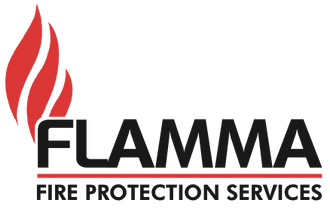What is intumescent fire proofing? -passive fire protection products
- Guides
- 09 Jan, 2023
What is intumescent and how does it work?
Intumescent passive fire protection materials are the key component to passive fire protection and can be described as substances that expand in thickness and decrease in density when subjected to heat. It expands out many times its original thickness, so much so that it is capable of crushing pipes when the correct fixture is used. Products like intumescent passive fire protection paint expands as it produces a soft carbonaceous char which act as an insulating and protective layer for the substrate that it is applied to in the event of a fire. The intumescent also produces a water vapour which aids to cool down the substrate or structure it is applied to and slow down or prevent the transfer of heat and flame.

What is the purpose of intumescent passive fire protection materials?
There are many different applications of intumescent materials. In any building there are lots of services such as pipes, cables, electrical sockets and electrical units and all these services create vulnerable areas where penetrations through walls are made. When penetrations through walls are made it compromises the compartmentalisation of the building. Intumescent passive fire protection materials come into play in these areas where openings have been made by these penetrations. In the event of a fire they will expand to close these gaps which without passive fire protection, would facilitate the growth of a fire and allow smoke and flame to spread through into other compartments and put all occupants of the building at serious risk.
All intumescent passive fire protection products that are designed to effectively fulfil this criteria are fire rated to a specific standard and will offer fire resistance for anything from 30 minutes up to 4 hours. Different circumstances will require a different approach as to the methodology used to fire stop an area that is at risk.

What are the different applications of intumescent passive fire protection products?
There are many different types of services in buildings that create different sizes and shapes of penetrations that require fire resistance to a certain fire rating in accordance with the current legislations. Each service will require different products with different fire ratings. Services like pipes will require pipe collars which will expand to crush a pipe and the penetration that it is going through to create a fire and smoke seal by crushing the pipe. Whether the pipe is combustable or non combustable will dictate the approach taken to seal the penetration. some larger pipes that create larger openings will be effectively fire stopped with intumescent fire batt which can be cut to shape and fitted at the opening and also act as formwork for the penetration. These are more commonly fitted in places that are above false ceilings and behind walls out of sight. Penetrations where electrical cables come through a ceiling or wall to connect to an electrical box can be sealed with intumescent putty pads (known as intumescent discs) and fire rated mastic. The lightest and most common form of passive fire protection is found in the application of intumescent paint coatings which are applied to walls and structural areas and are applied with different coats and techniques depending on what substrate the paint is being applied to. This can be steel, concrete, timber and lath and plaster board. There are different coating systems specifically designed and engineered to protect such materials.
Passive fire protection intumescent paints are used to slow down the transfer of heat on the substrate, it reacts when it reaches 120 degrees celsius. It stops the spread of flame across a wall and prevent it reaching another building compartment to spread through the building and most importantly, provide adequate time to reach a fire escape to protect the lives of the people occupying the building.
our approved installer Flamma Ltd is well practiced in the specific field of passive fire protection and conducts projects and operations in all applications of passive fire protection with years of experience to combat the risk of fire in situation, of any building and of any size.


